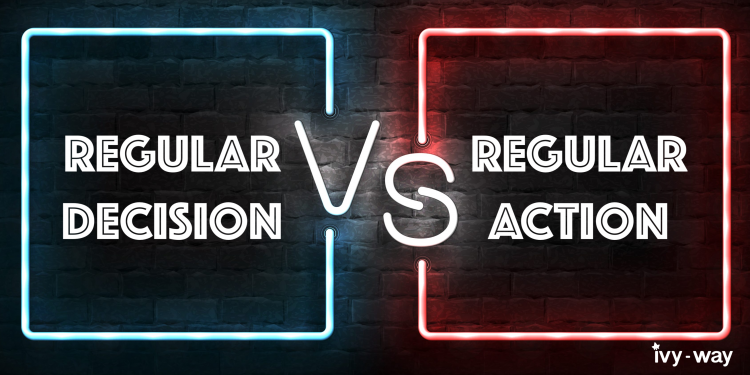Also in:
Waiting for college admissions results can cause tremendous anxiety for most high school seniors. Also, with today’s increasing applicant pool, it’s getting harder for colleges to determine where/who their prospects are. For these reasons, early decision (ED) and early action (EA) were born. In this post, we will examine both ED and EA, compare them to regular decision (RD), and explain to you why they might help you get into your dream school.
What Is ED?
Early decision is restricted to one school only. That is, you can only pick ONE school to go ED with. The reason is simple: once you are admitted through ED, you must attend that school! ED and EA have similar deadlines around early to mid-November, and you may hear back from your ED school as early as December. For those who cannot complete their application by ED deadline, some schools even offer ED II, typically around late December/early January. As for ED II, you will most likely receive your decision letter by late February, slightly earlier than RD results.
Needless to say, you should reserve your ED for your dream school, the school where you will 100% attend once admitted.
What Is EA (and restrictive EA)?
Early action offers more flexibility because you can apply to multiple schools as long as they have an EA option. Note that some schools such as Harvard, Princeton, and Stanford have restrictive/single choice early action, meaning you can only pick one school for EA. The pros are obviously receiving your results early: EA deadline is somewhere between early November and mid-November, and the result will come out in December.
As opposed to ED, you DO NOT have to attend the school if you are admitted. You can wait until your RD results come out and make that final decision. However, be sure to make up your mind before May 1, the national response deadline. Historically, some of the prestigious colleges accept a higher percentage of applicants through ED/EA. For all 8 Ivy League schools, early acceptance rates range from Yale’s 15.5% to as high as Dartmouth’s 27.9%, while the overall acceptance rates (early + regular) are all below 14%. Based on this, one may argue that applying early can strongly benefit you.
What Is RD?
Regular decision is the most common way of submitting your application. The deadline varies, usually from November to January, and the RD results come out in March or April. The majority of students apply through RD, and are welcome to apply to as many schools as they want. But of course, one must make the final decision by the May 1 national response deadline. Here’s a table summary:
| Application Deadline | Result Day | Enroll if admitted | Can apply to other schools | |
| Early Decision (ED) | Early/mid November | December | Yes | No |
| Early Action (EA) | Early/mid November | December | No | Yes |
| Restrictive EA | Early/mid November | December | No | No |
| Regular Decision (RD) | November to January | March to April | No | Yes |
What if I don’t get in through ED/EA?
The short answer is no worries, just be patient. If you do not get admitted through ED or EA—unless you are immediately denied/rejected—you will be deferred. Your application will be placed with the RD applications. Therefore, you now just have to endure the long wait and hear back from the school later.
Summary
In short, if your dream school offers ED and you are 100% sure about attending, go for it. Statistically, most schools have a higher acceptance rates for ED/EA admissions because these early applicants show their willingness to enroll by submitting the application early.
